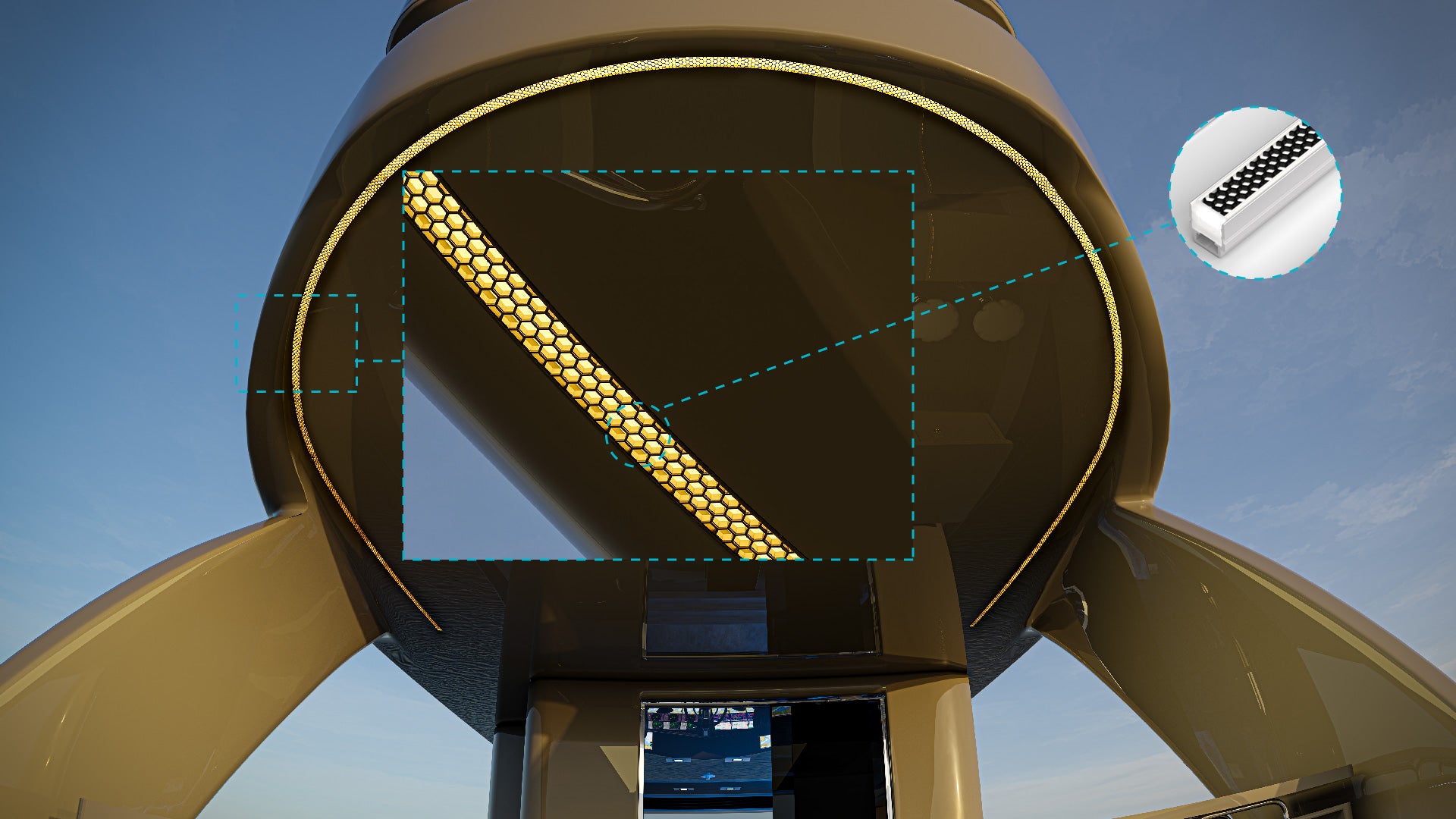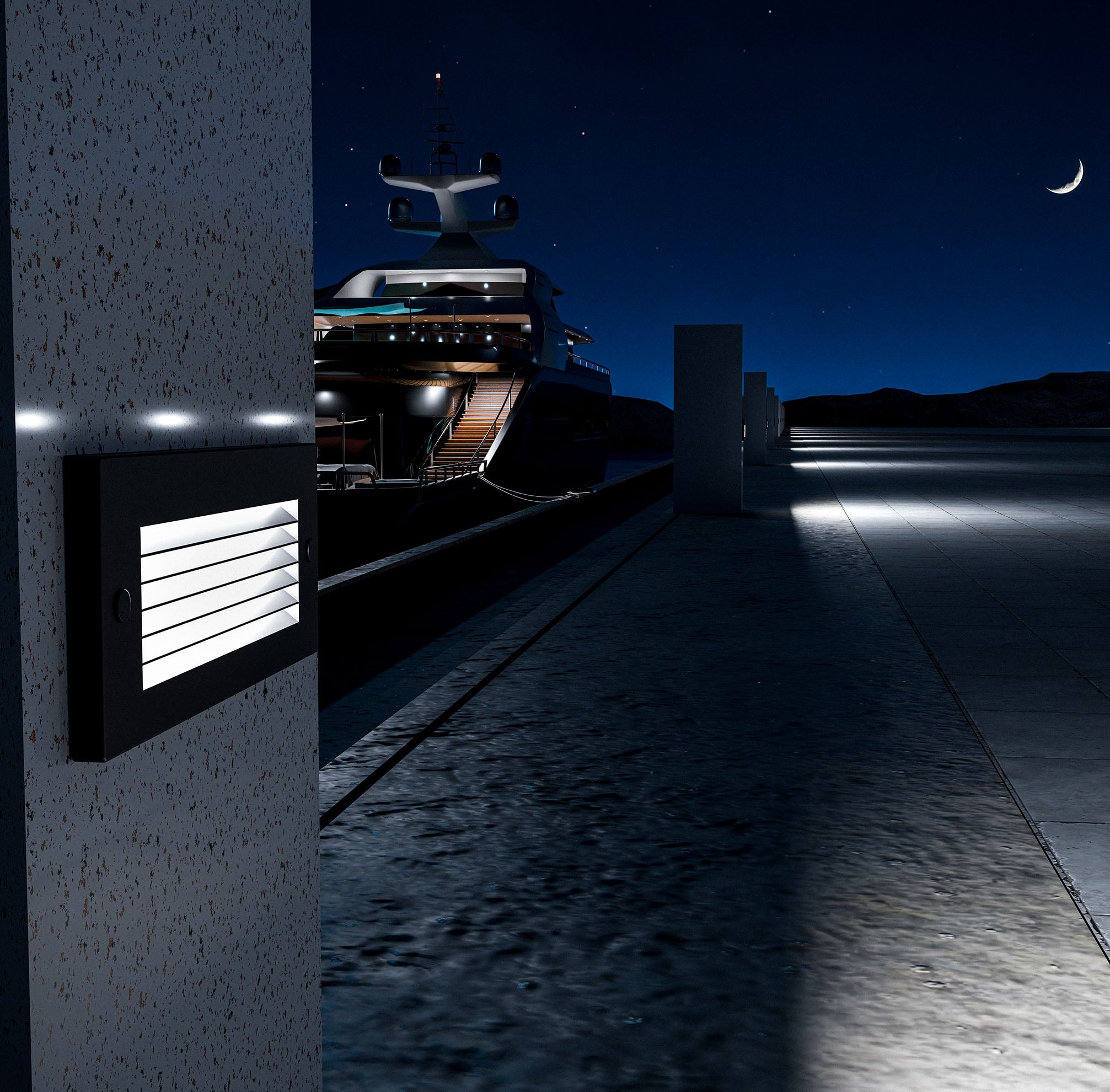Boat lighting serves crucial functions, from ensuring safety and aiding navigation to enhancing aesthetics and creating ambiance. Selecting the right lighting for each area of your boat can greatly improve your experience on the water. Here’s a guide to understanding different types of lighting and where to use them on your boat.
Navigation Lighting: Ensuring Safe Passage
Proper navigation lighting is essential for safe travel, especially in low-light conditions or at night. These lights are required by law to ensure your boat is visible to others and to communicate direction.
-
Port, Starboard, and Stern Lights: Navigation lights consist of red (port/left side), green (starboard/right side), and white (stern/rear) lights. These lights allow other vessels to understand the direction of your boat’s movement.
- Where to Place: Position port and starboard lights on the bow sides and the stern light on the back of the boat. The specific height and visibility requirements for these lights are regulated, so be sure to check your local requirements.
-
Masthead and All-Round Lights: A masthead light, which is a forward-facing white light, is required for boats over a certain length and increases visibility for approaching boats. An all-round white light serves the same purpose when anchored.
- Where to Place: Install the masthead light high up, typically on the mast, for maximum visibility. For an all-round light, place it on the boat’s highest point to signal that the vessel is anchored or in distress.
Deck Lighting: Enhancing On-Deck Visibility
Deck lighting illuminates work areas, walkways, and other on-deck spaces, making it safer to move around and perform tasks, especially after dark.
-
Floodlights: Floodlights are ideal for illuminating large deck areas. They emit wide beams and provide enough light for activities such as fishing, loading, or equipment preparation.
- Where to Place: Install floodlights on high points like the mast or cabin roof to cover the main deck area without casting harsh shadows.
-
Task Lighting: Task lighting is focused and allows you to work on specific activities, like preparing gear or docking. This type of lighting provides concentrated brightness in smaller areas.
- Where to Place: Place task lights near the helm, around fishing areas, or by docking stations. LED spotlights or adjustable fixtures work well for this purpose.
Cabin Lighting: Creating a Comfortable Interior
Inside the cabin, lighting can create a cozy and functional space. The right balance of ambient, task, and accent lighting enhances comfort and usability.
-
Ambient Lighting: Ambient lighting provides general illumination to brighten the entire cabin. It’s the primary light source, creating an inviting atmosphere.
- Where to Place: Install ambient lights on the cabin ceiling or along the walls for even distribution.
-
Task Lighting: Task lighting is essential for specific activities, such as reading, cooking, or working at the navigation station. Bright, focused lighting minimizes eye strain and increases functionality.
- Where to Place: Place task lights over countertops in the galley, at the navigation desk, and near seating areas where reading or detailed tasks are common.
-
Accent Lighting: Accent lighting is used to highlight specific features or add decorative touches, such as along shelves, behind artwork, or around cabinetry.
- Where to Place: Place accent lights along the base of cabinets, around windows, or under shelves to add depth and enhance aesthetics.
Cockpit Lighting: Improving Operational Visibility
In the cockpit, visibility is key for safe operation, especially during night sailing. The right lighting setup ensures you can control the vessel without distraction.
-
Low-Level Lighting: Low-level or dimmable lights in the cockpit offer sufficient visibility without causing glare or affecting night vision, making it easier to move around and monitor surroundings.
- Where to Place: Install low-level lights around the seating areas or floor-level to light the cockpit without overpowering brightness.
-
Instrument and Console Lights: Instrument lighting illuminates gauges, switches, and controls so that you can easily monitor them at night.
- Where to Place: Place these lights directly on the console or integrate them into the helm to ensure they are bright enough to read but not so bright as to be distracting.
Underwater Lighting: Adding Aesthetic Appeal
Underwater lights add visual appeal and ambiance to your boat when docked or at anchor. They’re also popular with recreational fishers since they can attract fish.
-
Types of Underwater Lights: LED and RGB underwater lights are commonly used for their brightness and color options, providing a customizable and captivating look.
- Where to Place: Install underwater lights on the transom (back) or along the hull for optimal effect. Make sure they are fully waterproof and designed for marine use.
- Benefits of Underwater Lighting: Beyond aesthetics, underwater lighting can illuminate the water near the boat, increasing visibility and safety around the vessel, especially useful at docks.
Anchor and Docking Lights: Ensuring Stationary Visibility
Anchor and docking lights are essential for safe docking and stationary visibility.
-
Anchor Light: The anchor light is a white light that signifies your boat is anchored, helping other boaters identify it in the dark.
- Where to Place: Position the anchor light at the boat’s highest point, typically on the mast, for maximum visibility.
-
Docking Lights: Docking lights are used to illuminate the dock area as you approach, helping with visibility and maneuvering, especially in low-light conditions.
- Where to Place: Install docking lights near the bow or stern to help light up the dock area directly in front or behind the boat.
Accent and Decorative Lighting: Adding Ambiance
Accent and decorative lights enhance the look of your boat, adding character and ambiance. They’re often used to create a more inviting and stylish atmosphere on board.
-
Strip Lighting: LED strip lights are versatile and can be installed along steps, railings, or edges for both safety and style. They are especially useful for illuminating pathways.
- Where to Place: Place strip lighting along steps, pathways, and under ledges to create a warm glow and improve visibility.
-
Color-Changing RGB Lights: RGB lights allow you to change colors, creating different moods on your boat. These lights are ideal for entertainment or special occasions.
- Where to Place: Use color-changing lights around the cockpit, deck, or cabin to set a festive or relaxing ambiance as desired.
Safety and Emergency Lighting: Preparing for the Unexpected
Emergency lighting is essential for staying safe in unexpected situations. These lights ensure you can signal for help or navigate in an emergency.
-
Strobe and Signal Lights: Strobe lights and other signaling devices are crucial for indicating distress and attracting attention in emergencies.
- Where to Place: Install strobe lights in visible areas, such as the mast or bow, so they can be easily seen from a distance.
-
Interior Emergency Lighting: Interior emergency lighting can activate if the main power source fails, providing visibility during critical situations.
- Where to Place: Position emergency lights throughout the cabin, especially near exits, to allow safe movement in case of a power outage.
Lighting is one of the most important aspects of a well-equipped boat, contributing to safety, functionality, and enjoyment. From navigation lights that ensure safe passage to accent lighting that creates ambiance, choosing the right lighting for each area of your boat makes all the difference.
If you're looking to enhance your boat's lighting setup, K2 Lighting offers marine-grade lighting solutions designed to meet the unique needs of boaters. Explore K2 Lighting’s collection to find high-quality, durable, and energy-efficient lighting options for every area of your vessel, ensuring safety, visibility, and comfort on the water.





